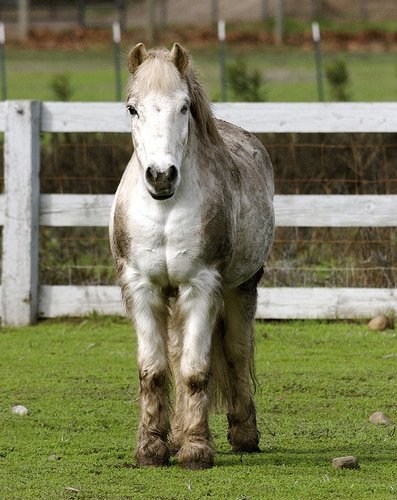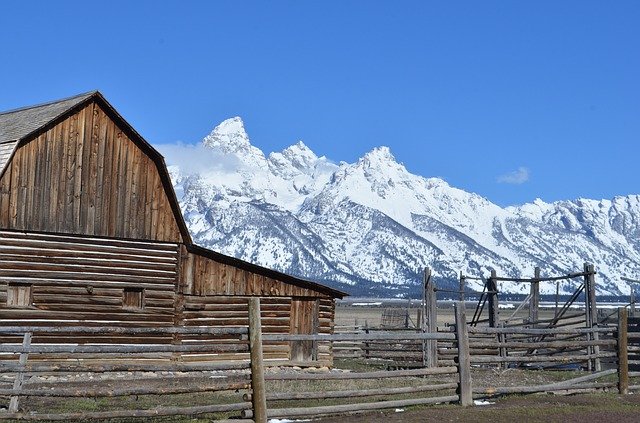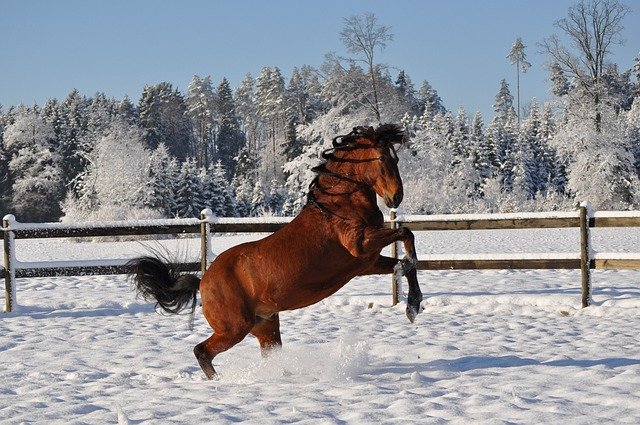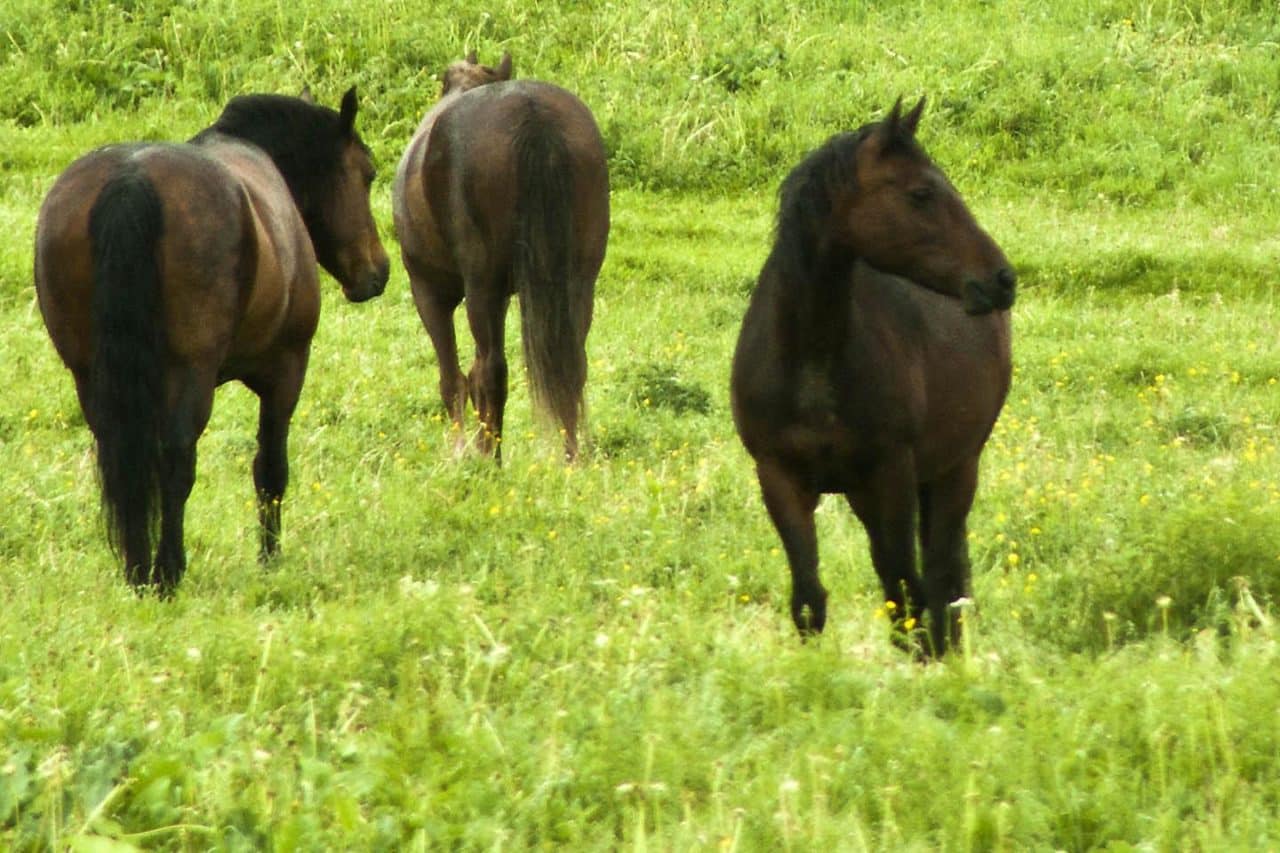

Spring is here. The snow is melting and the ground is thawing. The days are getting longer and better riding weather is just around the corner. But with the spring thaw comes the ever present danger of mud. All that melting snow mixes with dirt and manure to create a slurry that threatens to suck the boots right off your feet and the horse shoes off your horse’s feet. It is a slip and fall hazard not only for humans but for horses too. It also creates massive health and hygiene problems.
Mud provides an ideal breeding ground for bacteria and fungi that cause mud fever and thrush, among other things. Muddy footing can also lead to soft hooves, crumbling heels, and “shedding” frogs. Not to mention any number of injuries caused by the slick footing. Feeding your horse on a muddy surface can result in ingestion of dirt particles that can build up in the digestive track and lead colic. So, how do you keep the dangers of mud at bay?
Know How Mud Works
High risk areas are areas that see the highest amount of traffic. These include gates, water troughs, feed areas, shelters, and favored pathways from one of these areas to another. These are the areas that get trampled many times a day. Horses are creatures of habit. This stems from their past as a prey animal who relied on their excellent memory and instincts to survive. Once they have established watering holes, food sources, shelter, and the safest pathways to get to all of these essentials, they will not deviate from known safe zones unless forced to. It is a built in survival instinct, a holdover from their feral ancestors.
As your horse tramples the same ground day after day, their hooves churn up that topsoil and compact the soil underneath. The soil underneath continues to compact until it is a slick, impenetrable layer that even water cannot permeate. So, the water sits on top and mixes with the topsoil and manure. All this gets churned together by your horse’s hooves, making that slurry of mud that makes every equestrian’s life so difficult. As the topsoil gets churned into mud, the grass gets suffocated in the mud and the slick pan of dirt underneath the topsoil causes all kinds of problems with runoff, washing out the grass and plants in your paddocks and pastures.
An Ounce of Prevention is Worth a Pound of Cure
It is always better to prevent mud rather than attempt to combat it after you are already swamped. There are several ways you can go about this:
1. Good paddock planning
Paddocks need placed on high ground with good natural drainage. They should always have a one to two percent slope away from barns, shelters, riding areas, and water sources. Gates, feeding areas, and water troughs need positioned uphill with the best drainage if at all possible. If you must place a paddock or pasture in a low lying area, french drains are a good way to divert surface runoff. A basic french drain involves digging a trench and filling it with gravel or using a drainage pipe surrounded by gravel fill. The drain should lead away from the paddock and deposit the water a safe distance away.
2. Proper footing
Covering high traffic areas such as the ground around gaits, water troughs, feeding areas, and shelters with pea gravel can also help keep the mud at bay. If you have areas that have been identified as particularly bad in the past, you need to dig the area out a bit and fill it with a layer of larger gravel followed by a layer of pea gravel to ensure the best drainage. Be sure to add enough gravel to build the area up slightly higher than the dirt surround it.
3. Account for the number of horses in that paddock/pasture
Always make sure there is enough room in shelters and around troughs for all of the horses in the pasture or paddock to fit. You don’t want to have one horse hog all the nice footing and leave everyone else standing out in the mud. This is also why it is best to have more than one area of nice footing with proper drainage. This way, everyone has a place to stand up out of the muck.
That being said, I think it goes without saying that you can provide all the best dry spots but give him a hundred acres of pasture and he will find that one muddy spot that you missed. It’s like they have a natural mud detector and an unnatural attraction to filth. But, all we can do is try. If we can at least make sure he’s not standing in the mud all day, I think we can write that off as a win, even if he still manages to come out looking like a mutant yeti mud monster.
Know the Signs of Mud-born Ailments
It is vitally important that you know the signs of mud-born ailments so you can catch problems early. Even the best mud management programs can never completely eliminate all risk factors.
Mud fever/Scratches (according to Severn Edge Equine Vets)
1. hair loss and crusting
2. as the infection progresses, horizontal skin folds develop and hair loss becomes more pronounced
3. the skin at the back of the horse’s pastern or heel becomes inflamed and thickened
4. inflamation progresses around and up the leg
5. lesions develop up to the fetlock but in extreme cases can spread as far as the knee or hock
6. the leg becomes wet-looking, almost greasy where serum oozes from the affected area, this may progress to a white, pussy discharge
7. discharge will dry and harden into thick crusts that harbor the bacteria
8. severe cases will become very painful and hot and the whole lower limb may become swollen, the horse may become lame
Hoof Rot
1. black, smelly residue in around the frog
2. the frog starts “shedding” (rotting off)
3. the heels start crumbling and contracting
4. many horses will go lame as they loose the support from their frogs and their heels weaken and contract
Cover Photo by bozo_z_clown









